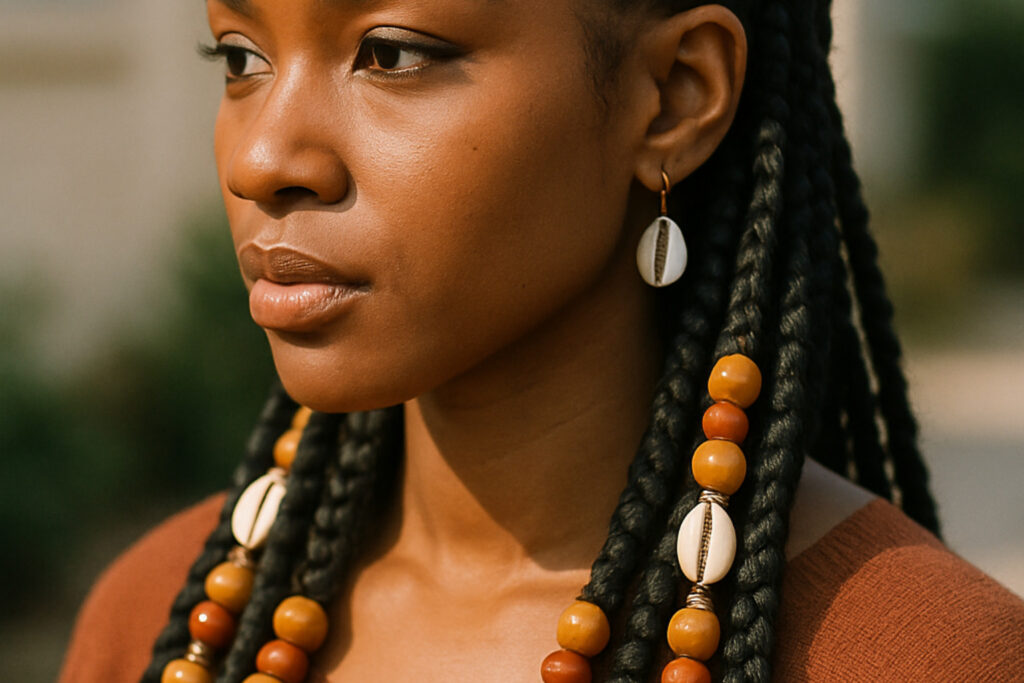Why Fulani Braids Are Taking Over the Hair World
Fulani braids are a traditional African hairstyle that combines cornrows at the front with loose braids at the back, often decorated with beads, cowrie shells, or silver coins. Originally worn by the Fulani people of West Africa, this protective style has become a global symbol of cultural pride and natural hair celebration.
Quick Facts About Fulani Braids:
- Origin: Fulani (Fula) people across West Africa’s Sahel region
- Key Features: Central cornrow, side braids, decorative accessories
- Duration: Last 3-6 weeks with proper care
- Installation Time: 4-7 hours depending on length and complexity
- Cost Range: $200-$800 based on salon and style complexity
- Hair Benefits: Protective styling that promotes hair growth and reduces daily manipulation
The beauty of Fulani braids lies in their versatility and cultural significance. Unlike regular cornrows that lay flat against the scalp, Fulani braids feature a distinctive pattern with cornrows at the front transitioning into individual braids that hang freely.
This style gained mainstream popularity when celebrities like Alicia Keys and Beyoncé showcased them on red carpets and album covers. Today, they represent both a fashion statement and a connection to African heritage for women in the diaspora.
Whether you’re drawn to their protective benefits for natural hair health or their stunning visual appeal, Fulani braids offer a perfect blend of tradition and modern style that works for various hair types and lengths.
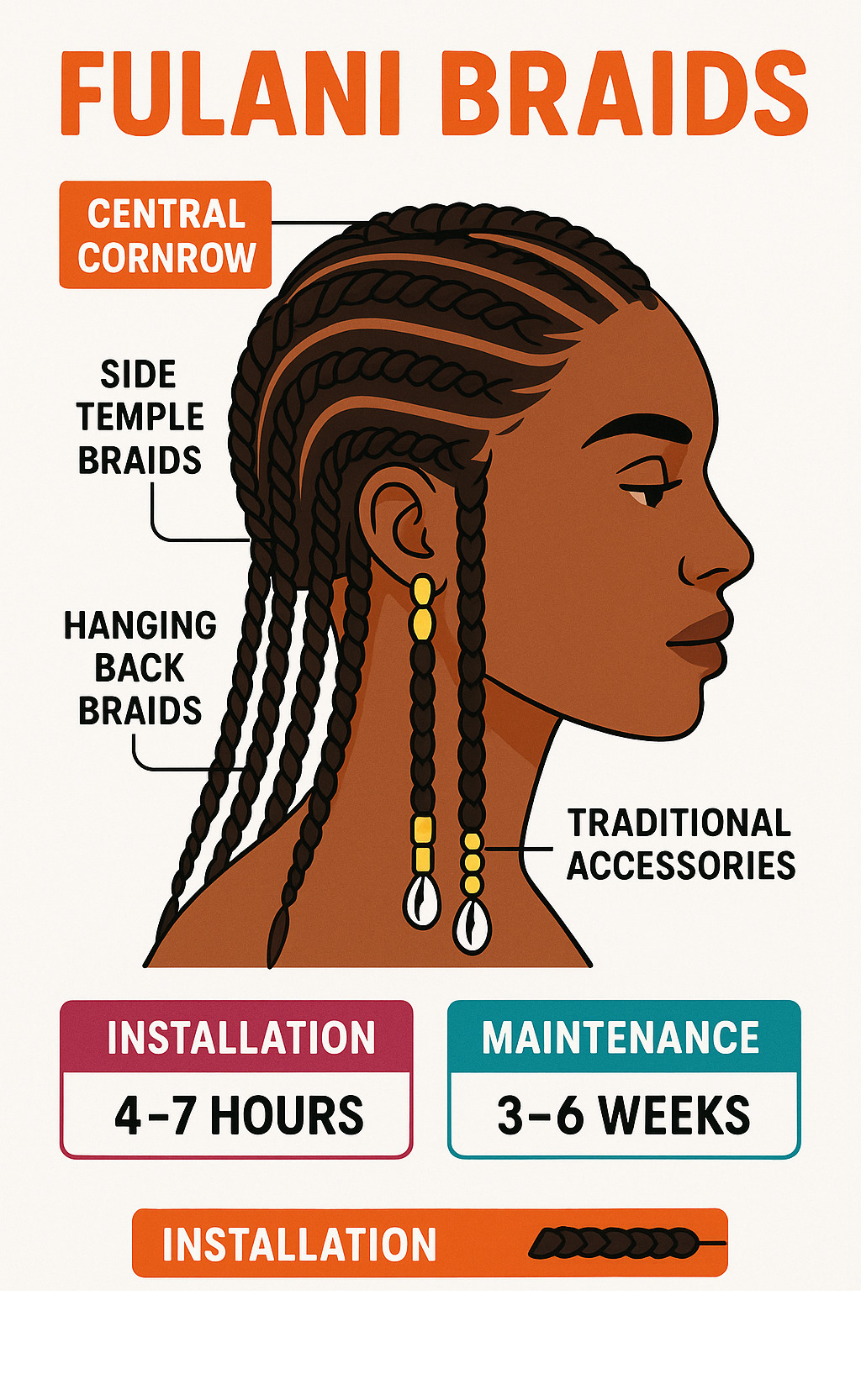
Simple guide to fulani braids:
History, Cultural Origin & Symbolism
The beautiful story of Fulani braids begins with the Fulani people, also known as the Fula, who have called West Africa home for centuries. Spread across the Sahel region from Senegal to Nigeria, these nomadic communities developed one of the most distinctive and meaningful hairstyles in African culture.
Picture this: thousands of years ago, African women were already creating intricate hair art that would make today’s Instagram influencers jealous. Archaeological evidence shows that hair braiding in Africa dates back to around 3500 BC, starting with the Himba tribe of Namibia. But the specific patterns we now recognize as Fulani braids emerged as something uniquely special among Fulani women.
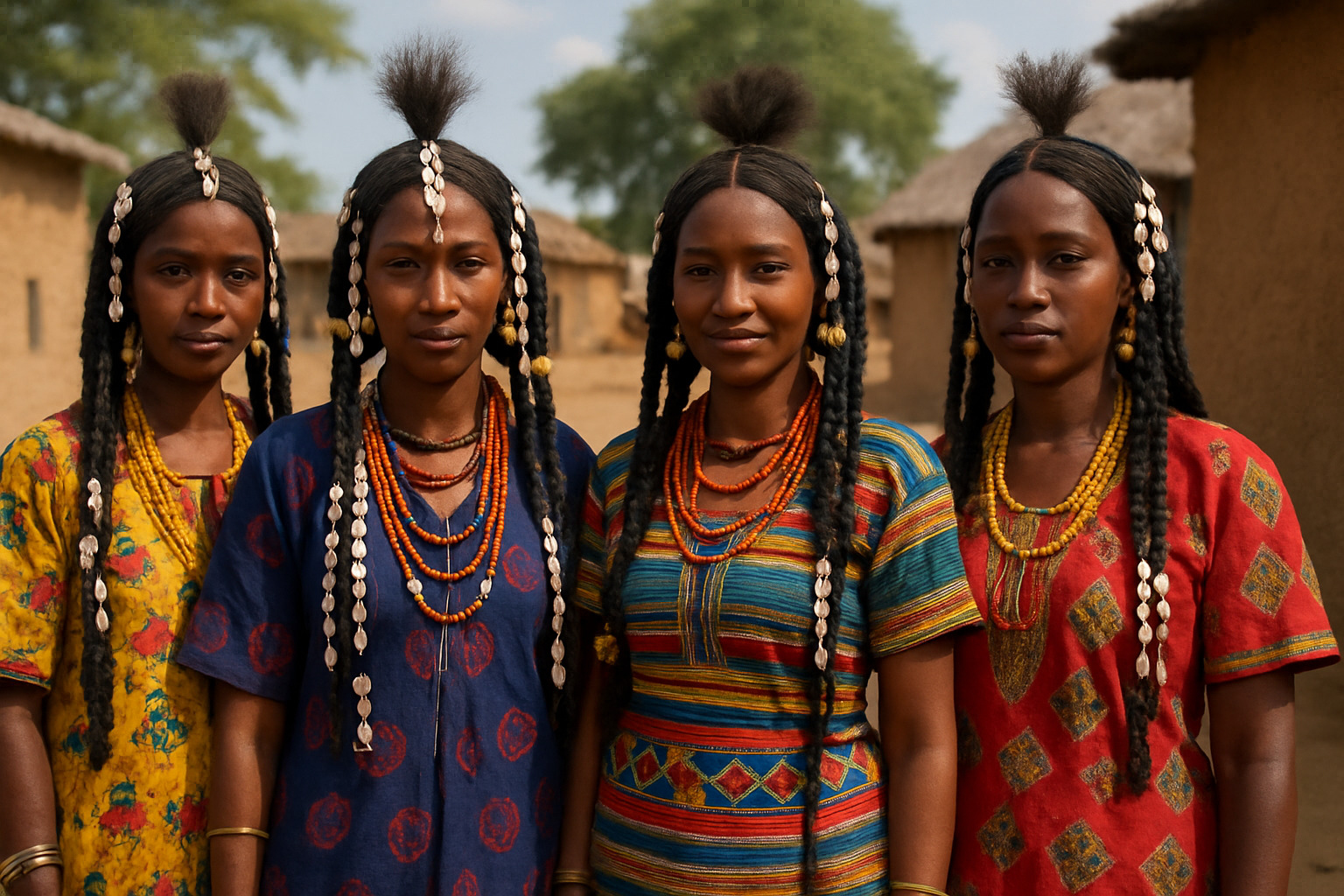
What makes this hairstyle truly fascinating is that it was never just about looking good. For Fulani women, their braids were like wearing their biography on their heads. Every twist, every bead, every pattern told a story that other community members could read like a book.
Think of Fulani braids as the original social media profile. Your hairstyle announced whether you were single or married, showed your family’s wealth, revealed your tribal connections, and even indicated your social standing in the community. It was all there, woven into beautiful patterns that took hours to create.
Here’s where the story gets even more incredible: during the darkest period of the slave trade, these intricate braid patterns may have served as secret maps to freedom. Some historians believe that different braiding techniques encoded escape routes and safe houses, turning a woman’s hair into a literal roadmap to liberty. This transforms Fulani braids from beautiful art into symbols of courage and survival.
For deeper insights into the cultural significance of these traditional styles, check out Scientific research on Fulani braids.
Traditional Meanings of Fulani Braids
In traditional Fulani society, getting your hair braided was like preparing for a job interview, wedding announcement, and family reunion all rolled into one. The most elaborate styles were saved for special ceremonies where women would spend entire days creating masterpieces that showcased their heritage.
Each family had their own signature braiding techniques passed down through generations. These heritage markers were like visual DNA – if you knew what to look for, you could identify a woman’s family lineage just by studying her braid patterns. Mothers taught daughters not just how to braid, but how to carry their family’s story in their hair.
The real showstoppers were the accessories. Cowrie shells weren’t just pretty decorations – they were actual currency in West Africa. The more shells adorning your braids, the wealthier your family appeared. It was like wearing your bank account on your head, but much more stylish.
Silver coins held even deeper meaning as precious family heirlooms carefully woven into the braids. These weren’t just ornaments but treasured pieces passed from mothers to daughters, carrying the weight of family history and love.
Different clan signals were embedded in the geometric patterns at the front of the head. Each tribe within the Fulani people had their own braiding signature, creating an instant visual identification system that connected women to their specific cultural group.
Modern Symbolism & Diaspora Pride
Fast forward to today, and Fulani braids have traveled far from their West African origins while keeping their powerful cultural significance. For women in the African diaspora, choosing this hairstyle has become a beautiful way to reconnect with ancestral roots and make a statement about identity.
The natural hair movement has acceptd Fulani braids as a symbol of rejecting narrow beauty standards. When women choose this traditional African style, they’re saying “no” to the pressure to conform and “yes” to celebrating their natural beauty and heritage.
There’s something deeply empowering about wearing a hairstyle that carries thousands of years of history. Modern women wearing Fulani braids are participating in an ongoing conversation about pride, resistance, and cultural continuity that spans continents and generations.
For younger generations especially, cultural reclamation through hairstyles like Fulani braids offers a tangible way to honor ancestors while expressing contemporary style. It’s a bridge between past and present, allowing women to carry forward traditions while making them their own.
Today’s Fulani braids represent so much more than a trendy protective style – they’re a celebration of survival, beauty, and the unbreakable connection between African women across time and space.
Fulani Braids: Signature Patterns & Accessories
The moment you see Fulani braids, you know exactly what you’re looking at. There’s something unmistakable about the way they blend structure with freedom, creating a hairstyle that’s both polished and effortlessly beautiful.
What sets Fulani braids apart from other protective styles is their unique combination of techniques. While cornrows stay flat against your scalp and box braids hang uniformly, Fulani braids create this gorgeous contrast between the sleek cornrows at the front and the flowing individual braids that cascade from the back.
The magic happens in how these elements work together. You’ve got that central cornrow running like a beautiful highway from your hairline straight back to your crown. Then there are those side cornrows that frame your face like a natural contour, making your features pop. The feed-in technique is what makes everything look so seamless – hair gets gradually added so there’s no obvious starting point where the braid begins.
But here’s where it gets really interesting: those individual braids that hang freely give you movement and versatility that you just can’t get with all-cornrow styles. And let’s not forget the decorative accessories – they’re not just pretty additions, they’re the jewelry that makes the whole look come alive.
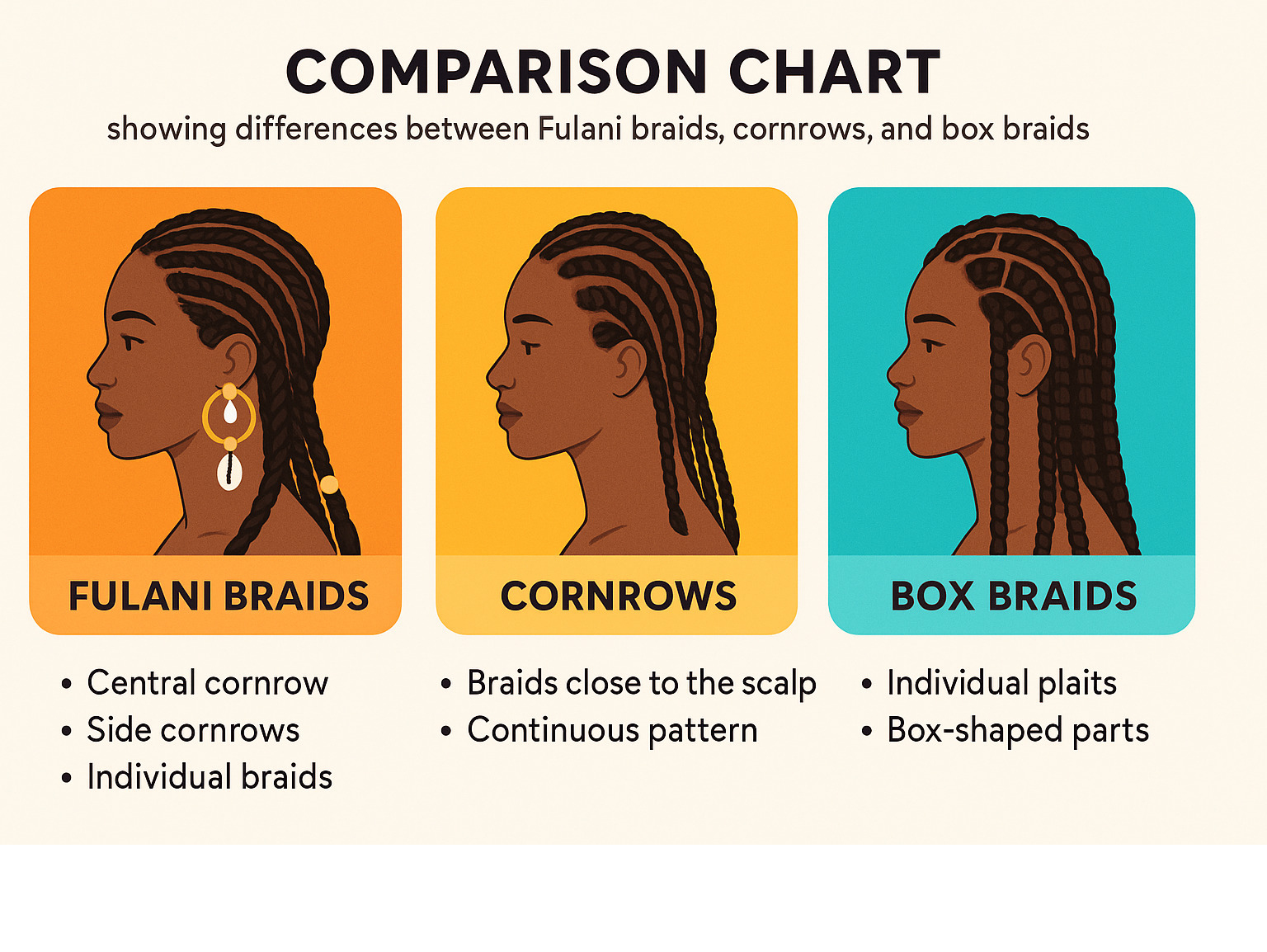
Typical Features of Fulani braids
That front-to-back center braid is like the signature of authentic Fulani braids. It’s the first thing people notice because it creates this beautiful focal point that draws your eyes upward. This central cornrow doesn’t just look good – it actually helps elongate your face and gives the whole style its distinctive character.
The temple braids are where your stylist can really show off their skills. These smaller cornrows curve around your hairline like delicate artwork, and they’re often where you’ll see the most creative patterns. Some stylists go for zigzag parts that catch the light beautifully, while others create diagonal lines or geometric designs that turn your hair into wearable art.
Those back hanging braids are what give Fulani braids their gorgeous movement and versatility. Depending on what you’re going for, these can be thick goddess braids that make a bold statement, or finer braids that create a more delicate look. The choice often depends on your hair health goals and how dramatic you want your style to be.
Accessory Meanings
Here’s something beautiful about Fulani braids – the accessories aren’t just there to look pretty. Each bead, shell, and charm carries meaning that goes back generations.
Those color codes in beads and threads? They’re like a personal story written in your hair. Traditionally, gold meant you were celebrating prosperity and success, while silver showed wisdom and maturity. Today, many women choose colors that speak to their personal journey or simply make them feel amazing when they look in the mirror.
Heirloom coins are probably the most precious accessories you’ll see in traditional Fulani braids. These aren’t just any coins – they’re often genuine antiques that have traveled across oceans with families, passed down from grandmothers to mothers to daughters. When someone wears these, they’re literally carrying their family history in their hair.
Modern charms have opened up a whole world of possibilities while still honoring the traditional look. Hair rings, cuffs, and decorative threads let you express your personality while keeping that authentic Fulani aesthetic. It’s this perfect blend of honoring the past while making the style completely your own.
Installation, Longevity & Maintenance
Getting Fulani braids installed is like settling in for a good movie marathon – you’ll need patience, snacks, and a comfortable chair. The installation process typically takes between 4 to 7 hours, depending on how elaborate you want your final look to be.
Most professional stylists reach for Kanekalon synthetic hair extensions to create the length and fullness that makes Fulani braids so stunning. This high-quality synthetic hair has become the gold standard because it blends beautifully with natural hair textures and holds up well over time.
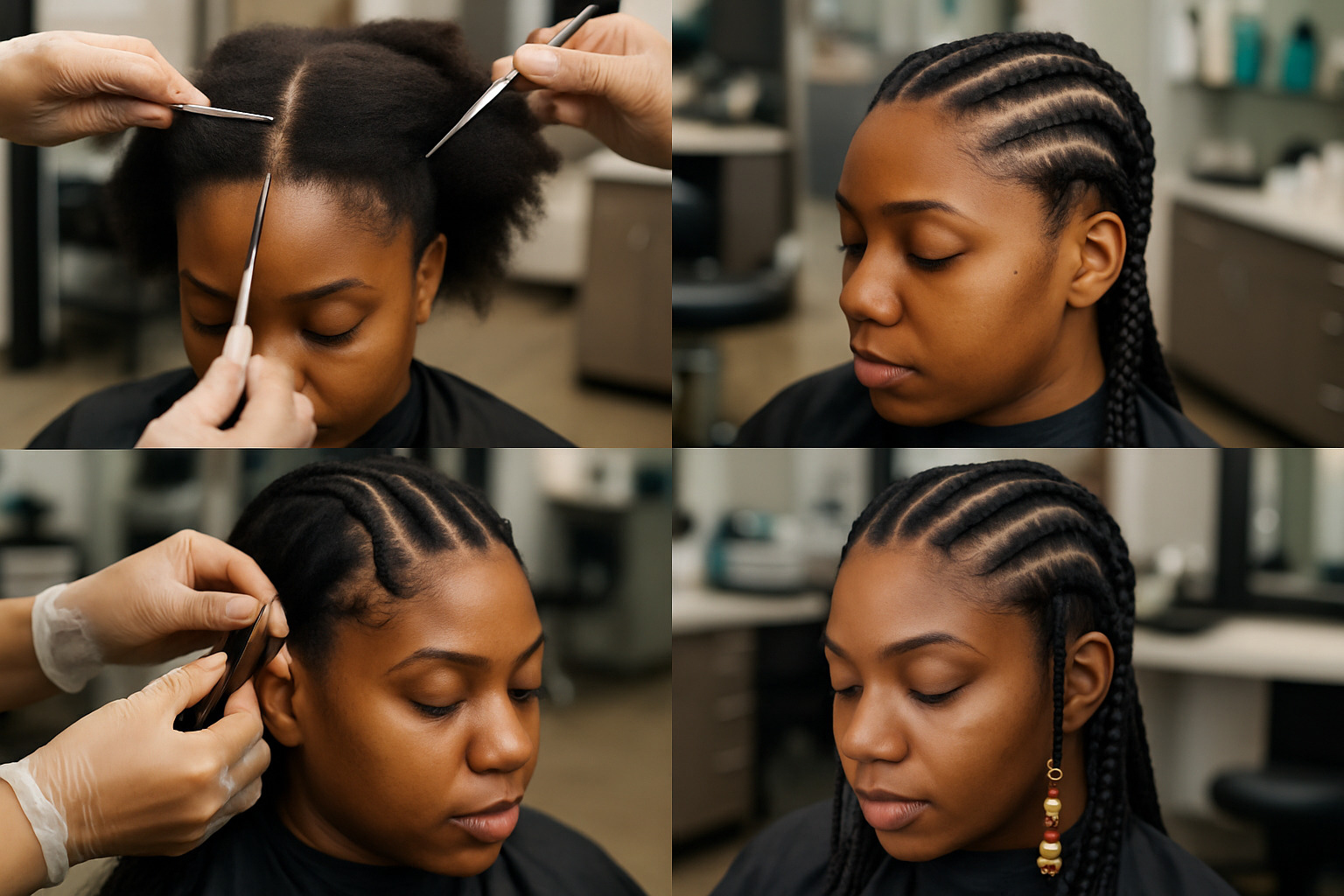
Here’s the good news about Fulani braids – they’re built to last. With proper care, you can enjoy your beautiful braids for 3 to 6 weeks. The key is treating them like the investment they are.
Scalp hydration becomes your new best friend during this time. A dry, itchy scalp is the fastest way to ruin an otherwise perfect hairstyle. Your satin bonnet will also become essential nighttime gear – think of it as insurance for your investment.
We do need to talk about something serious though. Traction alopecia is a real risk with any tight braided style. This type of hair loss happens when there’s too much tension on your hair follicles over time. The good news? It’s completely preventable with the right stylist and proper care.
If you’re curious about other protective styling options, our guide to Box Braids covers another fantastic choice for natural hair protection.
Step-by-Step DIY Fulani Braids
While we always recommend seeing a professional for the most intricate Fulani braids, you can create simpler versions at home with some practice and a lot of patience.
Sectioning is where the magic begins – and where many DIY attempts go wrong. Start with a clean center part running from your hairline straight back to your crown. Then carefully section off the areas where your front cornrows and temple braids will go. Take your time here because clean sections make all the difference in your final look.
The feed-in method is what separates amateur braids from professional-looking ones. Instead of adding all your extension hair at once, you gradually add small amounts as you braid down. This creates that seamless, natural transition that makes people wonder if it’s all your hair.
Bead securing requires a gentle touch. Thread your beads onto slightly damp braids while your styling gel is still working. Never force beads onto dry hair – that’s a recipe for breakage and frustration.
Materials & Tools Checklist
Before you start your Fulani braids journey, make sure you have everything you need:
A rat-tail comb is essential for creating those crisp, clean parts that make or break the look. Your edge control gel will keep everything smooth and sleek, while a hair threader makes adding beads so much easier than trying to wrestle them on by hand.
You’ll need 3 to 5 packs of Kanekalon braiding hair depending on how thick you want your final style. Don’t forget your accessories – beads, cowrie shells, or hair rings are what transform regular braids into authentic Fulani style.
A good moisturizing spray will be your maintenance MVP, and those hair ties and clips will save your sanity during the sectioning process.
Caring for Fulani Braids
Taking care of your Fulani braids doesn’t have to be complicated, but it does need to be consistent. Think of it as a gentle daily ritual rather than a chore.
Cleansing spray becomes your new shampoo substitute. Look for formulas with rosemary and aloe – these ingredients are like a spa treatment for your scalp. They reduce inflammation and add moisture without messing up your beautiful braid pattern.
When it comes to oil mist, less is definitely more. Focus on your scalp rather than the length of your braids, and choose lightweight options like jojoba or argan oil. Heavy oils might feel luxurious, but they’ll weigh down your style and attract lint.
Nighttime wrapping isn’t optional if you want your braids to last. Your silk or satin bonnet protects against friction that causes frizz and shortens your style’s lifespan. Think of it as beauty sleep insurance.
Hair Health Considerations
Let’s talk about the elephant in the room – tension control. Your Fulani braids should never hurt. Period. They should feel secure and snug, but if you’re reaching for pain relievers or can’t sleep comfortably, something’s wrong.
Rest periods between braid installations aren’t just a suggestion – they’re essential for healthy hair. Most experts recommend taking 2 to 3 weeks off between protective styles. Use this time to deep condition and pamper your natural hair.
Keep an allergy watch when using synthetic extensions. Some people develop reactions to the chemicals used in processing. If you experience persistent itching, redness, or irritation beyond the first few days, don’t tough it out. Remove the braids and check with a dermatologist if needed.
Fulani braids are meant to protect and celebrate your hair, not damage it. When done right, they’re a beautiful way to give your natural hair a break while looking absolutely stunning.
Styles, Cost, Celebrity Influence & FAQs
The beauty of Fulani braids lies in their incredible adaptability. What started as a traditional West African style has blossomed into countless modern interpretations that respect the original while embracing contemporary flair. Whether you’re drawn to the flip-over style that cascades dramatically over one shoulder, or prefer goddess strands that incorporate thicker, more voluminous braids, there’s a Fulani variation that speaks to your personal aesthetic.
One of the most striking trends we’re seeing is the blonde ombre effect, where natural dark roots gradually transition to golden ends. This creates a stunning contrast against the traditional braid pattern and adds dimension that photographs beautifully. For parents considering protective styles, kids’ braids offer a gentler approach with looser tension and playful accessories that make hair care fun rather than stressful.
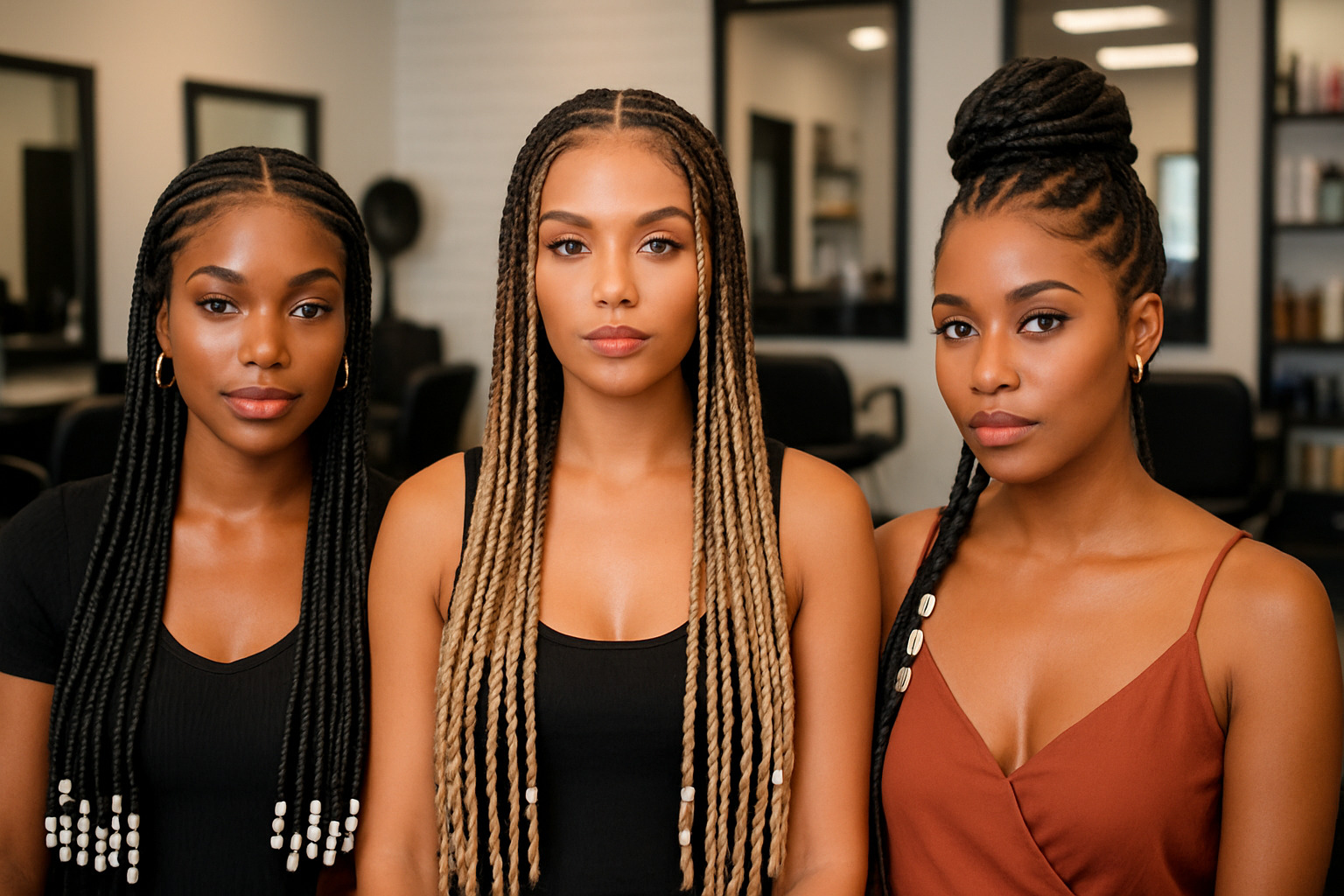
The investment in Fulani braids ranges from $200 to $800, with installation time spanning 2.5 to 7 hours depending on your chosen complexity and hair length. While this might seem like a significant commitment, you’re paying for both artistry and weeks of effortless styling.
Celebrity influence has been absolutely crucial in bringing Fulani braids to global attention. When Alicia Keys graced red carpets with her natural hair journey, and Beyoncé showcased elaborate versions in music videos, they weren’t just making fashion statements—they were cultural ambassadors introducing millions to this beautiful tradition.
For those dealing with humidity challenges while wearing braids, our guide on How to Fix Frizzy Hair in Humid Weather offers practical solutions. Stay current with evolving trends by checking the latest news on Fulani braids.
Popular Modern Styles of Fulani Braids
Boho braids have captured hearts everywhere by mixing loose, textured strands with traditional braided sections. This relaxed interpretation feels effortlessly chic and works beautifully for music festivals, beach vacations, or any time you want that perfectly undone vibe.
The zigzag parts trend has revolutionized the front sections of Fulani braids. Instead of straight, predictable lines, stylists create geometric patterns that turn your scalp into a canvas. These angular designs require serious skill and add an artistic element that photographs incredibly well on social media.
High pony arrangements gather all those beautiful hanging braids into an neat updo that’s perfect for formal events. You maintain the distinctive Fulani front pattern while creating a sophisticated silhouette that works from boardroom to ballroom.
The half-up style offers the perfect compromise for indecisive moments. Some braids are swept up and secured, framing your face beautifully, while others flow freely to showcase the full length and movement of the style.
Cost & Installation Time Breakdown
Let’s talk real numbers because budgeting for Fulani braids requires planning. Shoulder-length styles typically run around $375 and take approximately 2.5 hours to complete. Mid-length braids increase to about $450 with a 6-hour time investment, while waist-length styles can reach $500 and require a full 7-hour commitment.
Accessory add-ons create additional costs but transform the entire look. Basic beads might add $25 to your bill, while hair rings typically cost an extra $10. If you’re feeling glamorous, rhinestone strands can add $20, and colored extensions vary based on quality and length requirements.
You’re not just paying for the braiding time—you’re investing in weeks of styling freedom and hair protection that saves you daily styling time and reduces heat damage.
Celebrity & Social Media Influence
Album covers featuring Fulani braids have become cultural touchstones. Alicia Keys’ “Songs in A Minor” cover didn’t just showcase her vocal talent—it introduced countless people to a hairstyle that would become synonymous with natural hair confidence and cultural pride.
Red carpet moments have liftd Fulani braids from everyday protective styling to high-fashion statements. When celebrities like Beyoncé, Rihanna, and Taraji P. Henson choose elaborate versions for award shows, they create trend spikes that influence salon bookings worldwide within days.
Social media has democratized Fulani braid inspiration in ways previous generations couldn’t imagine. Hashtags generate millions of posts showcasing creative variations, tutorials, and styling techniques that make this traditional art form accessible to anyone with internet access.
Choosing a Stylist or Salon
Portfolio review should be your starting point when selecting someone to create your Fulani braids. Look for consistency in their work, clean cornrow patterns, and evidence they understand proper tension control. Pay attention to how their braids look after a few weeks, not just fresh installation photos.
During your consultation, ask the important questions: How long have they been specializing in Fulani braids? Can they show work on hair similar to yours? What’s their philosophy on preventing hair damage? How do they handle clients with sensitive scalps? What exactly is included in their quoted price?
Prep guidelines vary between stylists, but most prefer you arrive with clean, detangled hair free of heavy products. Some work better with blown-out hair, while others prefer natural texture. Clarify these details during booking to avoid day-of surprises.
Frequently Asked Questions about Fulani Braids
How long do Fulani braids last?
Fulani braids typically maintain their fresh appearance for 3 to 6 weeks, though several care factors influence this timeline. Your hair’s natural growth rate, maintenance routine, and installation quality all play roles. Proper nighttime protection with silk accessories and consistent scalp moisturizing can push longevity toward that 6-week mark, while neglect might require removal closer to 3 weeks.
Are Fulani braids damaging to hair?
When installed with proper tension and maintained correctly, Fulani braids actually benefit your hair as a protective style. The damage risk comes from braids installed too tightly, wearing them beyond recommended timeframes, or neglecting scalp health during wear. Always ensure your stylist uses appropriate tension—you should never experience pain or headaches from fresh braids.
What’s the difference between Fulani braids and cornrows?
The key differences lie in pattern layout and accessory use. While cornrows maintain consistent patterns across your entire head, Fulani braids feature that distinctive combination of front cornrows transitioning to individual hanging braids at the back. Traditional Fulani braids also incorporate decorative elements like beads and cowrie shells, whereas basic cornrows typically go unadorned.
Conclusion
When you choose Fulani braids, you’re not just picking a hairstyle – you’re stepping into a beautiful story that stretches back thousands of years. These intricate braids carry the wisdom of West African women who understood that hair could be both protection and art, communication and celebration.
The journey we’ve taken together through this guide shows how heritage celebration lives on in every braid pattern and carefully placed bead. From the Sahel region to modern salons worldwide, Fulani braids continue to honor the creativity and resilience of the women who first wore them.
Protective benefits make these braids a smart choice for your hair health journey. By tucking your natural hair safely away from daily styling damage, Fulani braids give your strands time to grow and strengthen. The reduced manipulation means less breakage, while the style itself shields your hair from harsh weather and environmental stressors.
At Beyond Beauty Lab, we believe that understanding the clean beauty journey means respecting where our favorite practices come from. Fulani braids perfectly represent this philosophy – they’re a time-tested method that naturally promotes hair health without relying on harsh chemicals or damaging tools.
The beauty of this traditional style lies in how it connects us to something bigger than our individual beauty routines. When you wear Fulani braids with knowledge and respect, you’re participating in a conversation that spans continents and generations.
Whether you’re planning your first installation or you’re already a protective style enthusiast, the most stunning braids are those worn with understanding and proper care. Take time to find a skilled stylist, invest in quality maintenance, and wear your braids with the pride they deserve.
Ready to explore more natural beauty wisdom and cultural traditions that can improve your wellness journey? Find additional Beyond Beauty Lab resources at More info about Beyond Beauty Lab. We’re here to guide you toward beauty choices that honor both your heritage and your hair health goals.

